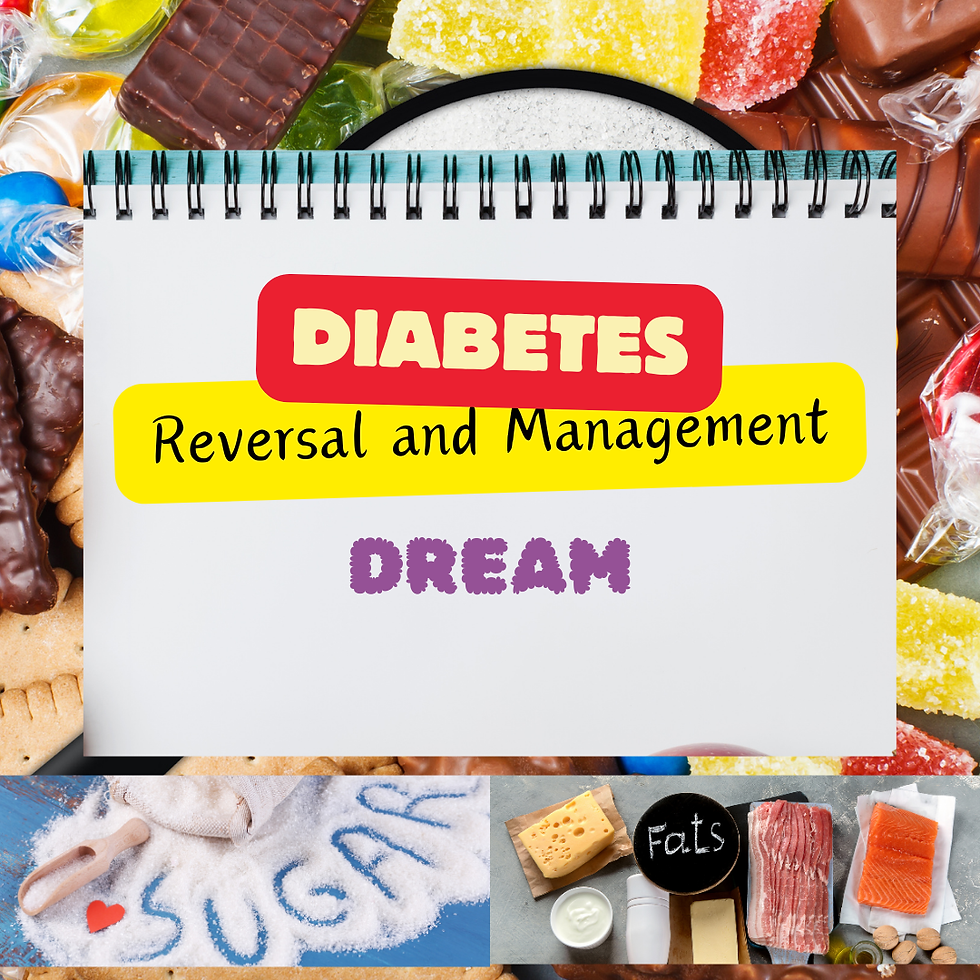Looking Back into Diabetes
- Nkengacha M.A.
- Jun 16, 2024
- 3 min read
Knowing what exactly diabetes is, how it has evolved over decades, and attempted treatment options can help undoubtedly increase awareness and adherence to measures aimed at treating and possibly reversing the condition. Surprisingly, the general public and diabetics in particular have little or no knowledge about this burden they have on their bodies, and this is a major weakness to patient-centered care and a major obstacle to good management.
On this platform, and through our DREAM program in particular, we are closing the gap in patient education by bringing lifechanging information about diabetes and other chronic diseases to the public, and to the concerned patients in particular.
To start with, let's dive into the yesterday of diabetes.
Background
Over the years, different names and pathophysiologies have been attributed to the disease. Diabetes was first thought to have been described in the Ebers Papyrus (c. 1550 BC). In about 5th/6th century BC, Ayurvedic physicians first noted the sweet taste of diabetic urine, and called the condition madhumeha ("honey urine"). Early accounts of the medieval Islamic world (8th-13th century) in their writing on diabetes they often referred to it as a disease of the kidneys. In 1674, Thomas Willis suggested that diabetes may be a disease of the blood.
In 1794, Johann Peter Frank was credited with distinguishing diabetes mellitus and diabetes insipidus. In 1889, Joseph von Mering and Oskar Minkowski discovered the role of the pancreas in causing diabetes mellitus. In the beginning of the 20th century, physicians hypothesized that the islets in the pancreas secrete a substance (named "insulin") that metabolises carbohydrates.
The first to isolate the extract used, called insulin, was Nicolae Paulescu. In 1916, he succeeded in developing an aqueous pancreatic extract which, when injected into a diabetic dog, proved to have a normalizing effect on blood sugar levels. Then, while Paulescu served in army, during World War I, the discovery and purification of insulin for clinical use in 1921–1922 was achieved by a group of researchers in Toronto paved the way for treatment. The patent for insulin was assigned to the University of Toronto in 1923 for a symbolic dollar to keep treatment accessible. The treatment of diabetes insipidus, became available before the causes of the disease were clarified.
Growing Trend
Sometimes in the past, the ancient Roman doctor Galen mentioned diabetes but noted that he had only ever seen two people with it, which suggests that it was relatively rare in those days. Our parents and health professionals who practiced some years or decades back will certainly align with doctor Galen to testify that diabetes was a rare disease, and very few people were aware of such a name. As a matter of fact, diabetes was considered a disease of the rich because the few people who had it were either rich people, people with good jobs, or their relatives or close friends.
Today, the story about diabetes has completely changed, with a drastic transition from a rare disease to a public health disease affecting people of all social status. Figures according WHO have jumped from 108 million cases in 1980 (4.7% prevalence) to over 422 million cases in 2014 (8.5% prevalence). In low and middle-income countries, this figure is on a rapid rise.
Today, approximately, for every 10 persons, 1 person is diabetic, and unlike Dr. Galen, doctors today will hardly end their day in the consultation room without attending to a diabetic patient, either newly diagnosed or coming for routine check up or for one complication or the other.In addition;
Diabetes is a major cause of blindness, kidney failure, heart attacks, stroke and lower limb amputation.
Between 2000 and 2019, there was a 3% increase in diabetes mortality rates by age.
In 2019, diabetes and kidney disease due to diabetes caused an estimated 2 million deaths.
Diabetes is no myth, and no longer a disease of just the rich, but a reality that touches everyone who conforms with the determinants that facilitate the installation of the disease, and unlike what conventional medicine says, it can be reversed and all complications stopped/reversed.
After this short background, we are taking a flight now into new knowledge. We are reintroducing you to the new knowledge that will reverse your diabetes, and related complications, and completely transform your health. Join our DREAM - Diabetes Reversal and Management Program, and let's fly together.


Comments